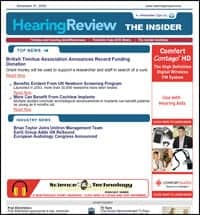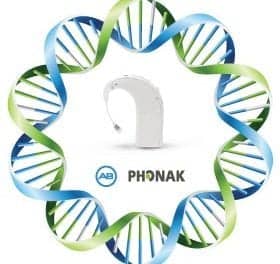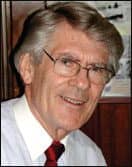Hearing Review Products is introducing a new feature, “Products in Practice,” to tap our readers into what distributors and practitioners nationwide are saying about products in the marketplace. This month we spotlight an indispensable tool: otoscopes.
Distributors responded to our questions:
- What are your best-selling products?
- Why are those items selling versus alternative products?
- Tell us about changes you envision down the road?

|
RANDY DICKINS, vice president of sales
MedRx, Largo, Fla
Our most popular video otoscope is the Video Companion, which interfaces with a computer via a USB 2.0 video capture cable. This enables the clinician to capture, view, and store digital images in our NOAH™ and TIMS® compatible video otoscopy software. The system is available in two configurations, depending on the needs of the user. We recommend this system for the dispenser who sees the majority of patients who visit the practice location. The alternative is the Video Companion LED that comes with rechargeable batteries. The primary components of the Video Companion are the deluxe probe and miniature video camera. The deluxe probe has an aluminum body and stainless steel conical tip that tapers down to 3mm. No focusing is required, as the focal plane is longer than the ear canal. This allows the practitioner to utilize a free hand for bracing. The probe accepts a Welch Allyn 3mm reusable specula and a MedRx cerumen management tool (curette). The miniature video camera is lightweight, streamlined, and has a precision white balance built in.

|
BOB KEMP, owner
Oaktree Products Inc, Chesterfield, Mo
About a year ago, Welch Allyn came out with a revolutionary new otoscope design called the Macroview. What makes this product unique is that unlike other otoscopes, you can actually focus this one. It also provides 30% more magnification and twice the field of view. They have recently introduced a digital version of this, which plugs into a laptop via USB—and is very popular. This digital Macroview has unsurpassed image quality, plus you can freeze the image, save it as a JPEG, file it, or e-mail it. It is also very affordable. Another product that is selling very well is the Dino-Lite. This is another video otoscope that plugs into your computer via USB, but what really makes it unique is the price. While you can save the image, e-mail it, print it, etc, the unit is only $250—a far cry from the original $20,000 video otoscopes! With the introduction of extended-wear hearing instruments such as the Lyric, you will see audiologists using operating microscopes more because they will need the binocular vision and depth perception they provide.
JOE VESPE, director of operations
Hal-Hen Company Inc, Garden City Park, NY
Primarily, you’ll see the fiber optic-based otoscopes are the best sellers. That can be Welch Allyn or Heine—the two major brands we sell. Some time ago, MedRx had a product that uses fiber optic light and it does a great job of visualizing the ear canal, but has been traditionally too expensive for most practices. More recently, Welch Allyn came out with a fixed focus video otoscope, which sells for about $1,000. They updated the unit, the Macroview video otoscope, by incorporating a focusing head and the capability to directly connect to a computer via a USB port. Two other recent entries can be found in the Dino-Lite low and Dino-Lite Hi resolution earscopes, which offer focus and USB connectivity. We feature the Dino-Lite, [which] comes in two versions. We find the high-resolution [version] is still one-third of the price of the Welch Allyn Macroview, but it also gives you focusability.

|
KATHY PALMERSTEN, account manager
Warner Tech-care Products Inc, Roseville, Minn
Our best-selling otoscopes are the rechargeable otoscopes. Lots of interest in video otoscopes that easily link to a computer or small television. The rechargeable otoscopes are easy to use because you don’t worry about changing batteries. These have more power.
I think that we will see easier-to-use video otoscopes—especially VOs that are easy to use because of mobility of the user.
Dispensers weigh in on our questions:
- What brand/type of otoscopes are you using?
- What do you like about that/those products versus other types?
- Have you tried other types?

|
MARCIA RAGGIO, PHD
Raggio maintains a private practice where she dispenses hearing aids and performs diagnostic hearing testing for all age groups. She is also a professor at San Francisco State University, and her areas of expertise include clinical audiology, hearing aids, aural rehabilitation, cochlear implants, and auditory cortical plasticity.
I only use one type, made by Welch Allyn, primarily because they are very sturdy. In my private practice, I have two, one being over 10 years old. I have had to replace the batteries and light bulbs a few times, but for the most part, they have held up well. We have used less expensive brands for our large audiometry classes at the university, but they last only 1 to 2 years at the most. We have a standard otoscope and a video-otoscope at the university, both made by Welch Allyn. The video-otoscope is wonderful, except it can be frustrating because, if you have a very tortuous ear canal or a lot of cerumen, manipulating the speculum trying to see the eardrum on the monitor can sometimes cause the patient pain. I wish there was a way to either use it as a video-otoscope, or somehow transform it so it can be used as a standard otoscope when necessary.
CHARLES V. FULMER, JR, AUD, CCC-A
Ballard Hearing and Speech Center, Seattle
I have four Welch Allyns. Three are rechargeable, and one is up to a video otoscope. Probably, the biggest thing is my Welch Allyn—I’ve used it for the last 30 years without any problems—I haven’t even had to change the batteries. You can’t get much better than that. One of the heads is a video head, and it was made by Welch Allyn also. I have tried, in other clinics, other people’s products. From the little, cheap, penlight otoscopes to other otoscopes. The Welch Allyn is about the right size, and everything else. With the Welch Allyn, I can do cerumen management pretty comfortably, without too much trouble.
BRYAN WACHTER, MD
Alaska Native Medical Center, Anchorage Department of Otolaryngology-Head & Neck Surgery
I’ve used mostly Welch Allyn otoscopes. It’s the brand of scopes existing in our clinic when I began working here. I like the operating otoscope with a wide speculum so I can swivel the viewing lens and slide instruments through if necessary. Our clinic provides general ENT care to a diverse range of age from infants to the elderly with a concentration in otology and chronic ear disease
MICHAEL ANDREOZZI
Andreozzi owns Beltone New England, Warwick, RI, which operates hearing aid retail clinics in nine states.
We’re using the MedRx video otoscope. We have been using their products for a number of years, consistently in all of our locations. We have tried some of the others, what would be considered to be more entry level video otoscopes that are available for our industry. They range anywhere from the Welch Allyn scope, which we tried—the first generation of that product, and also the second generation of that product—and the video scopes’ optics, or depth perception, is just not adequate enough for the purposes we use them for compared to what we get out of the MedRx scopes. The MedRx scopes have much better clarity, and sharpness, and detail, and the depth-perception range as you’re entering into the ear canal with the actual scope gives you much greater coverage, more of a wide-angle coverage as you go outside the ear into the ear. With the Welch Allyn scopes, for example, as soon as you bring the scope up to the ear canal, you feel like you’re already halfway down the canal. It’s very challenging to get a proper perception of where you are in the patient’s ear canal. Prior to that, we also used the video scopes that Starkey distributed, and that was a good-quality product. It was priced way too [high] to make them cost-effective for us to have them in each and every office location. The MedRx units were much more affordable, and the picture quality is very, very good.

|
PETER D. SOTIROPOULOS, AUD, CCC-A, FAAA
Board Certified in Audiology
The Hearing Rehabilitation Center, Kankakee and Steger, Ill
For handheld otoscopes, I have always used the Welch Allyn and the Gotchkiss. The Welch Allyn I’ve used from day 1 of practice 24 years ago. I do a lot of vestibular work as well, and with the Welch Allyn, the fact that you can take an ophthalmic scope and switch back and forth between an otoscope tip and an ophthalmic scope helps a lot. The Gotchkiss’ illumination (light source) and the ability to get a much wider view of the ear canal are something I’ve always preferred at a very reasonable cost. There’s one that I really do not like, by Heine—I unfortunately hate those! We’ve used several video otoscopes over the years. The practice I’m in now I bought about 3 years ago, and when I took it over, they had the Star-Med fiberoptic scope, which is more than adequate. I like it because not only does it allow me to get a good canal visualization, it also allows me to print images. I use such images for downloading and sending them to manufacturers to visually explain our concerns, to medical practitioners to define the reason for our referral, and to counsel our patients. I am looking forward to purchasing some of the newer handheld and portable video otoscopes that allow a USB connection and both storage and printing of the captured images. I am looking at the MedRx and Welch Allyn currently, but the decision is a hard one.
Judy O’Rourke is associate editor for Hearing Review Products. She can be reached at [email protected].

|
ROY F. SULLIVAN, PHD
Sullivan & Sullivan Inc, Garden City, NY
I hand-coded the Web site Audiology Forum: Video Otoscopy (www.rcsullivan.com) in 1995 at a time when an AltaVista search of “audiology” produced fewer than 10 links. Since then, the VO Web site has been used as a medical and academic teaching resource around the world, reaching 400,000 site visits to date. A Google search of the title now produces more than 500 referenced links to it. Despite the advantages of VO in clinical practice (see references on page 39), video otoscopy has never been accepted as an important tool by the audiological community. On the other hand, nonaudiologist dispensers have been the strongest supporters of VO. My hypothesis on this contradiction has to do with the largest sector of audiologists practicing in ENT-dominated settings. ENTs have essentially rejected video otoscopy as a routine clinical examination feature and are unlikely to support its use by audiologists. This is not likely to change.
- Sullivan R. Video otoscopy in audiologic practice. J Am Acad Audiol. 1997;8(6):447-467. Extensive, illustrated treatise on seven categories of video otoscopy applications within an audiological practice.
- Sullivan R. Video otoscopy in hearing aid fittings. Hearing Journal. 1997;50(7):38. Summary of video otoscopic applications to the hearing aid fitting process.
- Sullivan RF. Video otoscopy: basic and advanced systems. Hearing Review. 1995;2(10):12-16. A technical primer of the basic components and features of video otoscope systems. Color videographs of case and technical applications are included.
- Sullivan RF. Audiologic applications of video otoscopy. Hearing Journal. 1995;48(8):10 ff. A review of categories of video otoscopy applications in audiologic practice. Color videographs of illustrative case studies are included.
- Sullivan RF. How video otoscopy benefits hearing health practice. Hearing Instruments. 1993;44(4):15 ff. An examination of the benefits of video otoscopy of audiologists who are a referral resource for primary care physicians.





